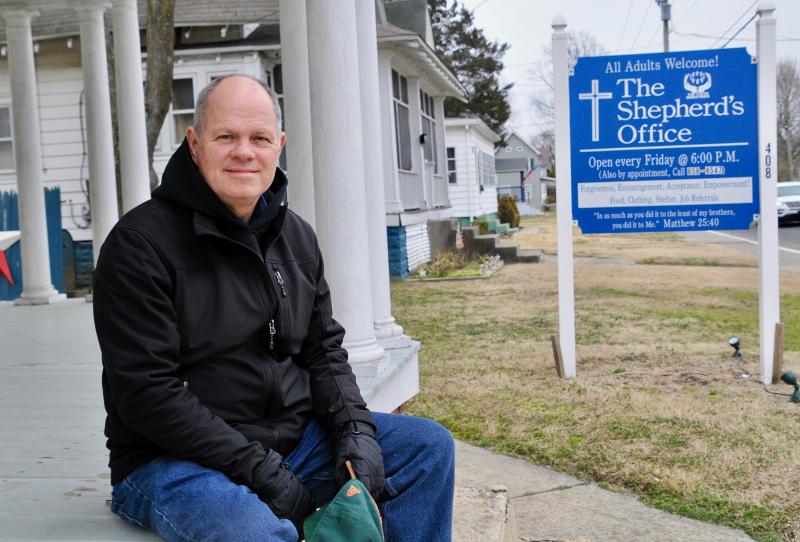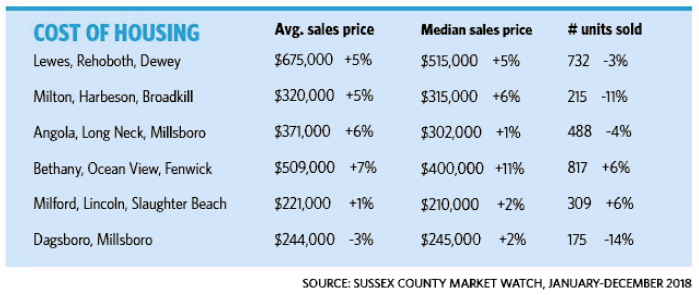Imagine a community of tiny basic, affordable homes for people who have jobs in eastern Sussex County but can't afford to purchase a home in the area.
Homeless advocate Jim Martin of Georgetown thinks a community of tiny, affordable homes would help, and he's talking about it to anyone who will listen.
In Sussex County, the average price for a house is nearly $400,000, while the median price is nearly $302,000, both double-digit increases from a year ago. Prices are driven up by the high cost of homes in the beach resort areas.
Building a tiny home community in Sussex County might remind some of Don Quixote taking on windmills, but Martin says he is committed to championing the cause.
Martin, who has addressed county council three times the past month, said he plans to keep attending meetings to present the idea and the plight of the working poor and homeless during his three-minute public comment allotment time. “Hopefully, this issue can eventually get on an agenda,” he said.
Martin said he and his wife are working tirelessly to help the homeless, but they can only do little things and are powerless to do big things. He asked council to step up and take action by starting a dialog to amend zoning regulations to allow the density needed for a tiny home community with its own zoning classification, allowing a community by right and not requiring a zoning change.
Martin said the county could amend its building code to include recent national and international code updates that provide regulations for tiny houses.
Small houses are permitted
County building officials said under current county building code, a house as small as 300 square feet is permitted on a lot. However, in AR-1 zoning, which covers most of the unincorporated areas of the county, each house would be placed on a 20,000 square-foot lot.
In higher-density zoning districts, such as MR and HR, more units would be permitted but in nearly every case, a rezoning application with two public hearings would be required.
“That would bring out the NIMBYs because unfortunately many people have preconceived notions about the working poor and homeless that they are all bad,” Martin said.
As part of the county's new comprehensive land use plan, steps are being taken to address the affordable housing issue, which surfaced as a major topic during public hearings.
A housing consultant hired by Sussex County is evaluating county programs and exploring options, including tiny houses.
Martin said under county zoning, the working poor are being zoned out. “They can find a place to work, but not to live,” he said. “Sussex County is workable but getting less and and less liveable as the home affordability gap widens.”
He said many of the working poor live in substandard apartments, share rooms or live with family and friends. Many have jobs in eastern Sussex and drive or share rides to their jobs
The waiting list for subsidized housing can be two to five years, and emergency housing vouchers for hotel rooms are usually given only to mothers with children.
Extremely affordable housing
Martin said his vision is to go beyond affordable housing and provide extremely affordable housing.
“The community would be a place where everyone helps each other to provide an atmosphere of striving and thriving,” Martin says. “It's for the outcasts who are not welcome anywhere else.”
He said homeless people and those recovering from addiction would be welcome, but the community would be drug- and alcohol-free.
He envisions the community of basic homes as small as 200 to 300 square feet offering some of the same amenities as standard communities, including services for the working poor.
Martin said donation of the land would be key to making a project work, and to get a developer to even look at it. “A private-public partnership would work. The county has to have courage and take a look at what land it has,” he said.
Manufactured homes, another alternative for affordable housing, not in a park must be placed on a minimum 5-acre lot unless a hardship variance is approved by the county board of adjustment.
Some might argue that affordable rental apartments may be a more viable solution, but Martin says owning a home is a better option.
Homeownership is the first step for people to rebuild their lives, he says. A home not only provides a safe place to live, but paying a mortgage and monthly bills also helps establish credit history.
“We are talking about people who are unbanked. They can't get debit or credit cards. They are the ones standing in line getting money orders,” he said.
“I'm willing to take this battle on. I have no vested interest and nothing to gain personally. I just see the pain out there on a daily basis,” he said. “ I'm more than willing to stay involved but also willing to step aside and let someone else with more experience head up the effort.”
Price point is $60,000 a year
The median sales price for homes in eastern Sussex in January was $302,000, up 7 percent from a year ago.
Average home prices vary widely based on proximity to the shore from $221,000 in the Milford-Lincoln area to $500,000 to $600,000 in the Lewes-Rehoboth Beach area.
According to the Southern Delaware Alliance for Racial Justice, it requires an annual wage of $60,000, or about $29 an hour, to afford an average house in Sussex County. To afford a two-bedroom apartment, a single person would need to make about $20 an hour. Martin said there is limited to no housing available for those who make $40,000 to $50,000 a year or less, or $19 to $24 an hour.
Minimum wage in Delaware is $8.25 an hour, or $17,000 a year.
Martin provides help to homeless
Martin, who is director of Shepherd's Office in Georgetown, served on the community development committee during his four-year term as an Upper Mooreland Township Commissioner in Willow Grove, Pa., from 2004 to 2008.
Over the past decade, Martin has helped start more than 20 sober-living homes in Delaware, and helped create homeless support centers in Seaford and Georgetown.
Martin speaks from experience. He lost everything – including his business and family – due to drug and alcohol addiction. He ended up homeless, going from shelter to shelter in the Wilmington area before finally getting on the road to sobriety in 2008.
He ended up at Casa San Francisco in Milton and then at an Oxford House in Lewes. He was so impressed with the Oxford House model, he went on to start other houses.
Shepherd's Office, 408 North Bedford St., offers services and food to the homeless including Shepherd's Helpers from 10 a.m. to 2 p.m. on Mondays, lunch from 11 a.m. to 12:30 p.m. on Thursdays, a dinner and movie starting at 4 p.m. on Wednesdays and Bible study and refreshments starting at 6 p.m. on Fridays. All programs are for adults 18 and over except Thursday lunches.
Martin uses social media as his outreach to create what he calls a people helping people community in Georgetown.























































